- Paola Sztajn
- https://psztajn.wordpress.ncsu.edu/
- Professor of Mathematics Education
- Collective Research Spread: Project All Included in Mathematics Expansion and Dissemination
- https://research.ced.ncsu.edu/projectaim/
- North Carolina State University
- Daniel Heck
- http://www.horizon-research.com/about-hri/staff/daniel-j-heck
- Vice President
- Collective Research Spread: Project All Included in Mathematics Expansion and Dissemination
- https://research.ced.ncsu.edu/projectaim/
- Horizon Research, Inc.
- Kristen Malzahn
- http://www.horizon-research.com/about-hri/staff/kristen-a-malzahn
- Senior Researcher
- Collective Research Spread: Project All Included in Mathematics Expansion and Dissemination
- https://research.ced.ncsu.edu/projectaim/
- Horizon Research, Inc.
Public Discussion
Continue the discussion of this presentation on the Multiplex. Go to Multiplex



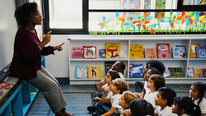
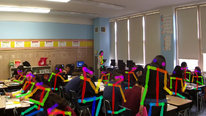
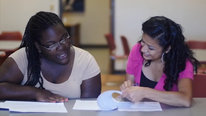
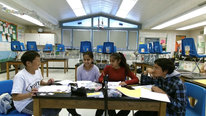

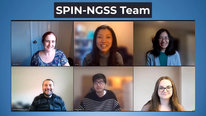
Paola Sztajn
Professor of Mathematics Education
In our work, we asked what to do once instruction went online. What we learned was that the dimensions of discourse we had used to talk about high-quality math talk in elementary classrooms continued to support high-quality teaching online. And, the techniques we had been working on, were also useful in new learning environments. What did you learn about math talk and discourse during the pandemic? We would enjoy learning from you!
Remy Dou
Dionne Champion
Research Assistant Professor
Thank you for sharing. I appreciate you pointing out the importance of utilizing multiple modes of communication in math teaching and learning. Can you talk a little about the modes of expression you utilize and the impact you have seen in teaching through multiple modes? I am currently doing research that seeks to understand creative embodied expression of math and science. Have you done any teaching activities that utilize embodied ways of thinking and knowing?
Sabrina De Los Santos
Remy Dou
Daniel Heck
Vice President
Thanks for your interest, Dionne.
Our emphasis on multiple modes of communication really originated from two sources--engaging all assets for communicating and making meaning, especially for emergent multilingual learners; and utilizing the range of representational forms in mathematics. But you are highlighting another strength of multiple modes of expression, embodied cognition. Much of what we've done with teachers encourages using inscribed (written, drawn) modes, and working with concrete or physical materials or models, although we've also noted how acting out scenarios with simple gestures or more fully embodied approaches can support expression and meaning making. In our work, the discourse techniques have been more about providing openings for students to express and explore mathematics through communication, and we've found evidence of more student-centered pedagogy and emphasis on conceptual development as a result.
I'm very curious how you and others have approached expression and exploration of mathematics ideas via dance and other embodied forms. As I said, I think our techniques open opportunities, but we could learn much more about how to make powerful use of them.
Sabrina De Los Santos
Remy Dou
Jessica Hunt
Awesome work. I am also interested in utilizing multiple modes of communication and wonder how this looks online in particular. For me, discourse does not always mean words. Have you found any innovations to support the use of alternate forms of communication, such as gestures, online?
Remy Dou
Paola Sztajn
Professor of Mathematics Education
Hi Jessica,
Teachers who worked with us reported using several ways to communicate during online teaching. Many were still related to using different ways to represent mathematical ideas and a variety of ways to share mathematical ideas. We have not heard much about gesture when instruction moved to online instruction, but gesture is one way to express ideas that we often discuss with teachers--many times related to work with emergent multilinguals. We have also seen several teachers encouraging students to use gesture, particularly when sharing their understanding of word problems. For example, one technique we discuss in our book (Activating Math Talk, Corwin, 2021) is called retelling. In this case, students retell story problems in their own ways and often gestures are used.
How are you using gesture in your work? I am curious to learn more.
Remy Dou
Jessica Hunt
Jessica Hunt
Hi Paola,
I love the technique of retelling. It sounds similar to a technique we've used called reshowing as described in a TCM article (Hunt et al, 2018).
Reshowing is using the exact gestures or actions students use as they solve or explain reasoning. We've found in our work with students with disabilities that reshowing is meaningful way to encourage participation (Lambert et al, 2020) and advancement of reasoning (Hunt & Silva, 2020), as students' nascent ideas can be communicated nonverbally.
So, we encourage teachers to use students' gestures as a part a revoice ("reshow/revoice) and to ask other students to include gestures as a part of their retell ("reshow/retell"). I've often been fascinated by gestures holistically because of the potential to notice students' nascent ideas this way before more formal language is used.
Remy Dou
Paola Sztajn
Professor of Mathematics Education
Jessica, this is great and retelling and reshowing seem to share a lot. In our techniques, we borrowed from literacy, where retelling is related to comprehension. Thus, when retelling a math problem, students come to understand the problem better. What we have seen is that in retelling, kids use gestures and other ways to convey the story in the problem, particularly in early grades.
Remy Dou
Jessica Hunt
Jonee Wilson
What pertinent and relevant work- thinking about how mathematics discourse may need to change given the new structures in place for student learning. The book sounds like it could be a really helpful resource! And, as a researcher, I loved the matrix displaying the discourse types across four dimensions (it could be a useful way to think about and categorize the nature of in classroom math talk when describing some of the things observed in classroom videos).
Remy Dou
Paola Sztajn
Professor of Mathematics Education
Thanks Jonee--I think our work would go great together. Your practices and our techniques really match well and can really support teachers and, more important, student learning.
Remy Dou
Sabrina De Los Santos
Research and Development Associate
Fascinating work and discussion on mathematics discourse! I am interested in learning more about what was mentioned at the end of the video- "how high-quality discourse can be implemented in a variety of learning environments." Could you describe in what other learning environments you hope to implement your program? Also, did you engage caregivers in math talk during remote learning? Thank you for sharing!
Remy Dou
Paola Sztajn
Professor of Mathematics Education
Hi Sabrina, thanks for your comment. Our work is organized around the four dimensions of discourse (questioning, explaining, listening, and using multiple modes of communication). What we learned from our partner teachers was that they successfully continued to attend to these dimensions as they moved into on-line or hybrid instruction. Of course, we also know they also use these in face-to-face environments and, what we think is really important, teachers plan for these dimensions and how to help students participate in them.
Our work in this project has not extended to caregivers--is this a group you work with? How would you see these dimensions supporting them? This is an interesting area to think about. One of our premises is that participation in high-quality discourse is taught and learned, so, we could work on that with caregivers, I would think.
Sabrina De Los Santos
Remy Dou
Daniel Heck
Vice President
Sabrina, just to echo Paola's response, our work so far has been focused on teachers but we've been exploring ideas for engaging coaches and administrators in parallel. We have not delved into how to support caregivers, but thinking about how we could promote communication about math in home and community settings is another intriguing context where the work might productively apply.
Sabrina De Los Santos
Remy Dou
Temple Walkowiak
I am so excited to see the continued great work that you all are doing on Project AIM! Your book is on my summer reading list. :-) I'm wondering if/how your research methodologies have changed and adapted during the pandemic? Are you all still capturing videos of classroom teaching, and were you able to do that in a virtual space? Thanks for sharing!
Sabrina De Los Santos
Remy Dou
Paola Sztajn
Professor of Mathematics Education
Temple, thank you for your question. I will love to hear what you think about the book--let us know!! We were done with our data collection last year, thus, we did not have to change our research methods. We have, however, remained in touch with some of our PD participants and we tried to learn from them as they shared what they were doing in their classrooms during the last year.
Sabrina De Los Santos
Remy Dou
Michael Belcher
This is a very interesting project and a great video! It's so encouraging to see and hear how teachers have been able to adapt during the pandemic. I might have missed this in the video, but did you work with teachers to adapt their discourse practices to the virtual world or did they come up with those adaptations (e.g., relying on the whiteboard and using breakout rooms) on their own? Were there any practices that didn't translate well? Were there any that translated better than you expected? Thank you and great work!
Remy Dou
Paola Sztajn
Professor of Mathematics Education
Hi Michael, thanks for your comment. COVID did shake our work because of our focus on classroom discourse; so we had to rethink what discourse means in online environments. We wrote a little blog about that (here), because we realized that our Discourse Matrix, with different types of discourse and dimensions to characterize the types, was still helpful to think about discourse in other environments. Our work with the teachers, however, in terms of data collection or the intervention itself had ended before the beginning of the last school year. Thus what we know about the teachers is based on our partner teachers sharing with us what they were doing.
Remy Dou
Remy Dou
Assistant Professor
Comments: This is really tremendous work! As mentioned in previous comments, the quality of and impact this work is having is encouraging. I look forward to future extensions and expansions of your program.
Questions: I'm curious about the ways that teachers adopted and adapted the lessons they learned and applied from your framework. Did you find meaningful unexpected or surprising ways that teachers were doing so? Given that elementary teachers sometimes teach multiple subjects, were you able to collect information on whether teachers were applying these approaches in other subject areas?
Sabrina De Los Santos
Remy Dou
Paola Sztajn
Professor of Mathematics Education
Remy, thank you for your the comments. Much appreciated. We only have anecdotal data on this, but teachers in our program consistently told us that they were using "the math talk techniques" in other subjects they taught. It was interesting because we initially adapted techniques that are well known in literacy. And yet, what our partner teachers would tell us was that they were "using the math techniques in literacy." So, although we cannot report on research on the topic, we did hear many times from teachers that they were thinking about discourse in other subject using the tools they learned in our professional development program.
Sabrina De Los Santos
Remy Dou
Remy Dou
Assistant Professor
Very cool! Thank you for sharing.
Remy Dou
Toby Baker
As a special education K-3 teacher as well as a copresenter, making meaning of math concepts is so important for K-3. The discourse matrix can be applied to any subject, including Social Emotional learning and ELD. Thank you!
Remy Dou
Paola Sztajn
Professor of Mathematics Education
Toby, I would love to hear from you about your ideas regarding connections between the Discourse Matrix and SEL or ELD. If you have specific ideas, please share!
Remy Dou
Patrick Smith
What interesting work. Thank you! For the last year, a group at Horizon Research has been studying how the pandemic affected science instruction, especially early on. Teachers reported their students being less engaged in science instruction after school buildings closed, and they described how their teaching shifted to more transmission-oriented strategies. In your video, I was particularly struck by the teachers' accounts of how well the four dimensions translated to an online environment. It seems these teachers were particularly well equipped for the transition from in-person to remote by their work with Project AIM. How encouraging!
Paola Sztajn
Professor of Mathematics Education
Thanks Sean. When we reached out to some of our participating teachers during the pandemic, we did hear about them continuing to think about the dimensions and how to implement them during online instruction. I think that these teachers were strongly committed to high-quality discourse and had seen it in action in their classrooms, so they worked on considering how they could keep that going for them. The dimensions did seem helpful to them!
Lindsay Goldsmith-Markey
This is such exciting work! I am very interested in the Math Discourse Matrix from your video and book. The 4 dimensions of Questioning, Explaining, Listening & Modes of Communication are useful for me in my own work--which involves helping teachers to increase their responsiveness in mathematics instruction. I'm wondering what kinds of work you have found particularly helpful to do with teachers to get them to move away from correcting discourse and towards more responsive discourse? Any standout activities or series of activities?
Also--since you asked what we all had learned about math discourse during the pandemic...
I run PDs where teachers are engaged as learners in solving open-ended tasks, and I work with a team of teacher leaders who are learning to run these kind of PDs in their own schools. Our team has learned that in the virtual world it is easy (and highly effective) to take a screen shot of JUST A PORTION of a learner's work, display that for the whole group, and then get the group to discuss first what's going on in the work shown, and then work collaboratively to extend the thinking/reasoning through group conversation and facilitator annotating. Very powerful!
Paola Sztajn
Professor of Mathematics Education
Lindsay, I like what you shared and the new ways in which we can present student work for discussion in PD. There are lots of new possibilities, right? I wonder why sharing just a portion of the work seems productive to teachers and also how do you go about choosing which portion to share? This is really interesting to think about.
Our PD is based on the idea that when teachers learn about the matrix, and then learn techniques that help them take the ideas to the classroom in a very organized fashion that they can teach students to participate, they try these techniques, which allows them to start noticing students' mathematics. The techniques open the spaces for that and then we come back together to reflect on what they are learning, using the dimensions of the matrix as the framework for reflection. This going back and forth between technique and theory has been helpful in our work with teachers and has supported teachers' a move away from correcting discourse. We wrote about this in a paper we published last year, here is the reference:
Sztajn, P., Heck, D. J., Malzahn, K. A., Dick, L. K. (2020). Decomposing practice in teacher professional development: Examining sequences of learning activities. Teaching and Teacher Education (91). doi.org/10.1016/j.tate.2020.103039
Let me know what you think and thanks again for your comment.
Jeremy Roschelle
So glad you were asking and answering these questions about hybrid math discourse. Something as simple as white boards could make a big difference. And I hadn't seem your dimensions before -- so I discovered a useful resource. Thanks for sharing!
Paola Sztajn
Professor of Mathematics Education
Thank you Jeremy. Our matrix specified. how the four dimensions are enacted in the classroom across four different types of discourse (correcting, eliciting, probing, and responsive). We have found that the matrix has been supportive of teacher learning, and it has also served as a research framework for our data analysis.
Natalia Yanez Castillo
What a great project! I really liked how you emphasized the different ways of communicating ideas. This is so important as not all students communicate their thinking in the same way. This flexibility can also give space to students who don't speak English as their first language and make them feel they are learning in a safe environment.
Paola Sztajn
Professor of Mathematics Education
Hi Natalia, our video does not talk about it, but the whole project had a focus on emergent multilinguals. We consider that all students in early grades are learning to communicate mathematically and our strategies attend to that. In our book, we talk more about attending to emergent multilinguals and how to support their mathematical growth. This free resource from the book is a guiding principle for working with emergent multilingual learners. I hope this it useful as well! Thanks for your comment.
Daniel Heck
Vice President
Thank you for your interest and support, Natalia. Just to add to Paola's reply, our Modes of Communication dimension really has three emphases:
1. Multiple modes of verbal communication
2. Multiple modes of non-verbal communication
3. Patterns of communication among students and teacher
We try to address your idea primarily within the first, where we include the use of students' most comfortable chosen language(s), as well as the use of everyday language and academic language--whether in English or another.
Especially in this dimension, our goals are to enable the fullest individual participation, to enrich the opportunities for all students to learn from inclusive and diverse ideas, and to build meaning for mathematical ideas that can then support individual and collective understanding of precise mathematical language.